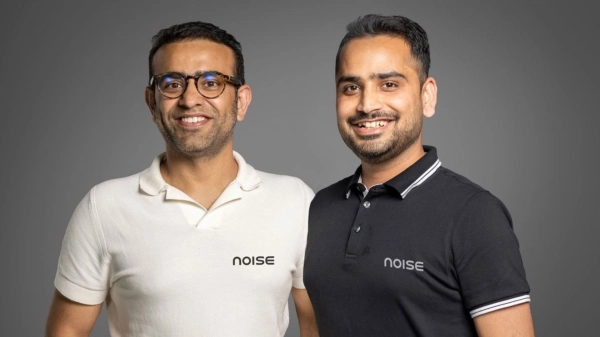5 Points Why Robotic Surgery Is Far From Replacing Traditional Surgery

Robotic Surgery only acts as an extension of surgeons and not a replacement. “Ultimately, the robots used for surgery are operated by a human. They do not independently operate by themselves,” said Dr Adarsh Patil.
It was in 2002 when the first-ever Robot Assisted Surgery was conducted in India at Delhi’s Escorts Heart Institute and Research Centre. More than two decades on, Robotic Surgery is witnessing its prime days in India.
This cutting-edge technology has not only brought about a paradigm shift in surgical precision but has also redefined the patient experience, promising quicker recoveries and improved outcomes. From urology to gynaecology, general surgery to cardiac interventions, these robotic systems have found applications in a diverse array of medical disciplines.
Although, in a nascent stage, the adoption of robotic surgery platforms in India has witnessed a steady rise. In 2022, nearly 12,000 robotic-assisted surgeries were performed in India. In 2023, Apollo hospital reported to have conducted over 450 robotic procedures in just the first two months.
Dr Mahendra Bhandari, CEO of Michigan-based Vattikuti foundation lists out reasons why Robotic Surgery is gaining popularity. “The precision of surgery, completeness of the job, tissue damage is bare minimum, blood loss is negligible, no transmission and recovery is quicker. That is why Robotic surgery is popular,” he said.
How is Robotic Surgery Conducted?
The advanced surgical robots in use today are helping surgeons in complex surgeries. Generally, a Robotic Surgical System is used for carrying out a surgery wherein, the surgeon sits behind the console and controls the surgical robot. He has a screen in front of him where he watches the three-dimensional, high-resolution image of a patient's organs.
The surgical robot has two or four arms (depending on the model of the robot) one of which is used to hold a 3D endoscopic camera that goes inside the patient's body. Other arms are used to carry surgical instruments. The robotic arms rotate around preset pivot points.
However, these robots only act as an extension of surgeons and not a replacement. “Ultimately, the robots used for surgery are operated by a human. They do not independently operate by themselves. The robot cannot make its own independent decisions,” explained Dr Adarsh Patil, Bariatric Surgeon associated with Apollo Clinic, Bengaluru.
There are various Robotic Surgical Systems in use, but California-based Intuitive's Da Vinci surgical robot is commonly found in the industry. It is widely used for general surgeries, urologic and gynaecological surgeries.
Stryker’s Mako Robotic-Arm Assisted Surgery System and Smith and Nephew’s Cori are primarily used in orthopaedic surgery.
Is Robotic Surgery Better than Traditional Surgery?
While Robotic Surgeries are hailed for bringing precision and accuracy to the table, leading to minimal risk and faster recovery time, it is still not a go-to option for every surgery. Robotic surgery gives better clinical and patient outcomes in certain cases.
Robotic surgeries have been increasingly used in joint replacement and implant surgeries these days. Dr Ashish Phadnis, Orthopaedic Surgeon associated with Jupiter Hospital, Thane uses handheld semi-automatic Cori robot for his surgeries. He said, “In conventional surgery, there is a margin of error and to improve that we have tools like X-ray, Navigations and other tools. It’s just like GPS. You tell the map you want to go from point A to point B and the map will tell you the different possible ways to reach your destination. But with Robotics, you only have one best route to achieve your objective.”
As per Phadnis, if a surgeon is conducting a delicate surgery requiring a high degree of precision and the robot detects any deviation from target, say for even 0.5 mm, then it will stop. “So, the precision of the surgery is increased manifold,” he added.
Surgical robots have more joints and range of movement is wider than other instruments being used like laparoscopes. They have thinner arms measuring around 1 cm and they can reach the corners of the body where the surgeon's hands or the present instruments cannot.
Robotic surgery also reduces the strain on a surgeon by eliminating the need for standing for hours in the operation theatre. The surgeon can sit at the console and using a joystick control the movements of robotic arms.
Dr Patil, however, believes that robotic surgery has an advantage over traditional surgery only in certain cases and certain diseases. He said in case of prostate cancer, thymus or complex surgeries involving spine, a robotic surgery may give better patient outcome. “For example, in prostate surgery the robot can save the nerves that are responsible for erection. So that the patient doesn’t lose erection post the surgery.”
Furthermore, robotic surgery is minimally invasive. The opinion is, however, divided as to whether the incision made through robotic surgery is minimal. “We are undertaking less number of steps in the procedure, that means less handling of the tissue and less inflammation. Thus, patient’s pain is reduced, and recovery is faster,” Dr Phadnis noted.
But does Robotic surgery reduce the duration of procedure as compared to conventional surgery? Dr Mahendra Bhandari of Vattikuti Foundation believes otherwise. In fact, he said that in many cases Robotic surgery takes much more time than the traditional surgery.
“Time is no issue. It used to be an issue when Anaesthesia was risky. No surgeon would like to save time even in an emergency case. On the other hand, surgeons become time efficient with experience,” Dr Bhandari said.
Acceptability of Robotic Surgery among Patients
Over the years, Robotic surgery has also gained acceptance among patients. More people are opting for Robotic surgeries. But various factors go into consideration for patients to decide whether they want to undergo robotic surgery or not. The two prominent factors are: 1. Cost 2. Desired outcome from the surgery.
The surgery robots are a huge capital investment and thus a Robotic surgery can cost 3 to 5 times more than the conventional surgery. “In metro cities like Mumbai, Bangalore, Delhi where people can afford Robotic surgeries, the demand is growing,” said Dr Patil.
Dr Phadnis, however, has a different view. He says the recommendation of the doctor is crucial. “If the cost factor is taken out of the equation, then 100% of the patients tend to opt for whatever the doctor recommends,” he added.
In case of Orthopaedic surgery, Dr Phadnis explained, the outcome a patient desires also plays a vital role in deciding whether to opt for a Robotic Surgery or not.
Challenges of Robotic Surgery
Despite the added advantages of Robotic Surgery, going forward, the access of the technology to wider, low-income masses remains a major challenge. In India, a large chunk of the population is still dependent on government/municipal corporation-run hospitals for their health needs. However, the high cost of Robotic surgery means the people that need it the most, are unable to afford it.
Highlighting the need for government intervention in making Robotic Surgery available to the least common denominator of the society, Dr Bhandari said that surgical robotic systems should be made available at every district, state-run and Central Govt hospital.
“Robotic surgery is expensive. It has a recurring cost and a capital cost which is unaffordable to 70-80% of the people. Govt should leverage the technology for the maximum benefit of the poor,” he added.
Stay tuned for more such updates on Digital Health News


















